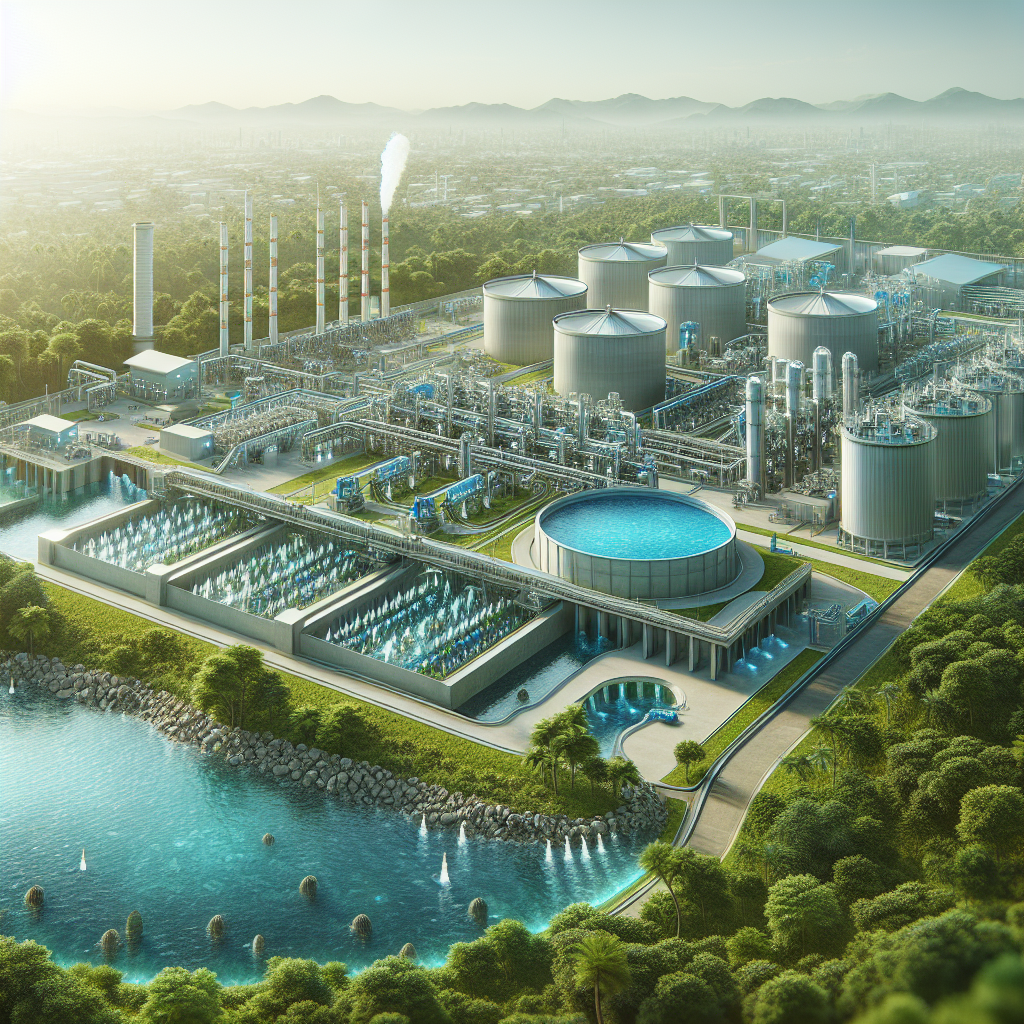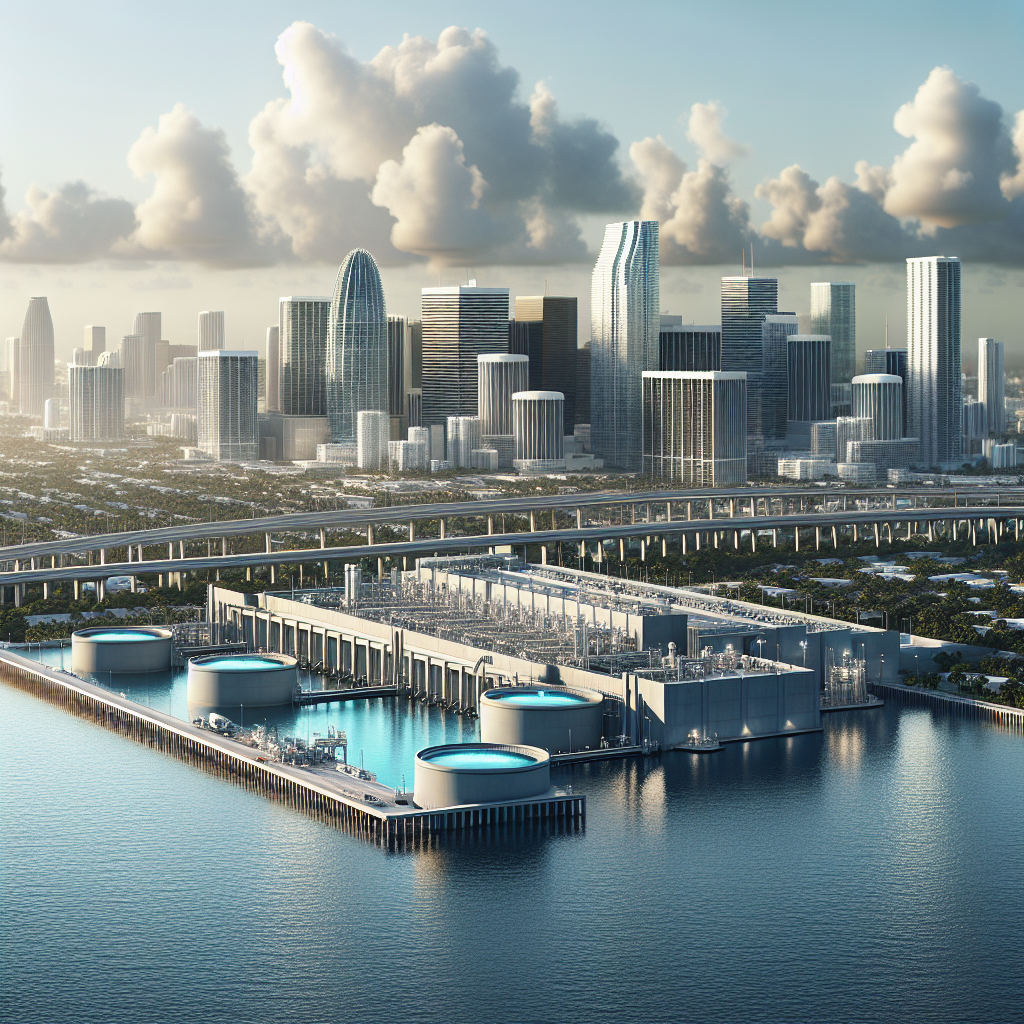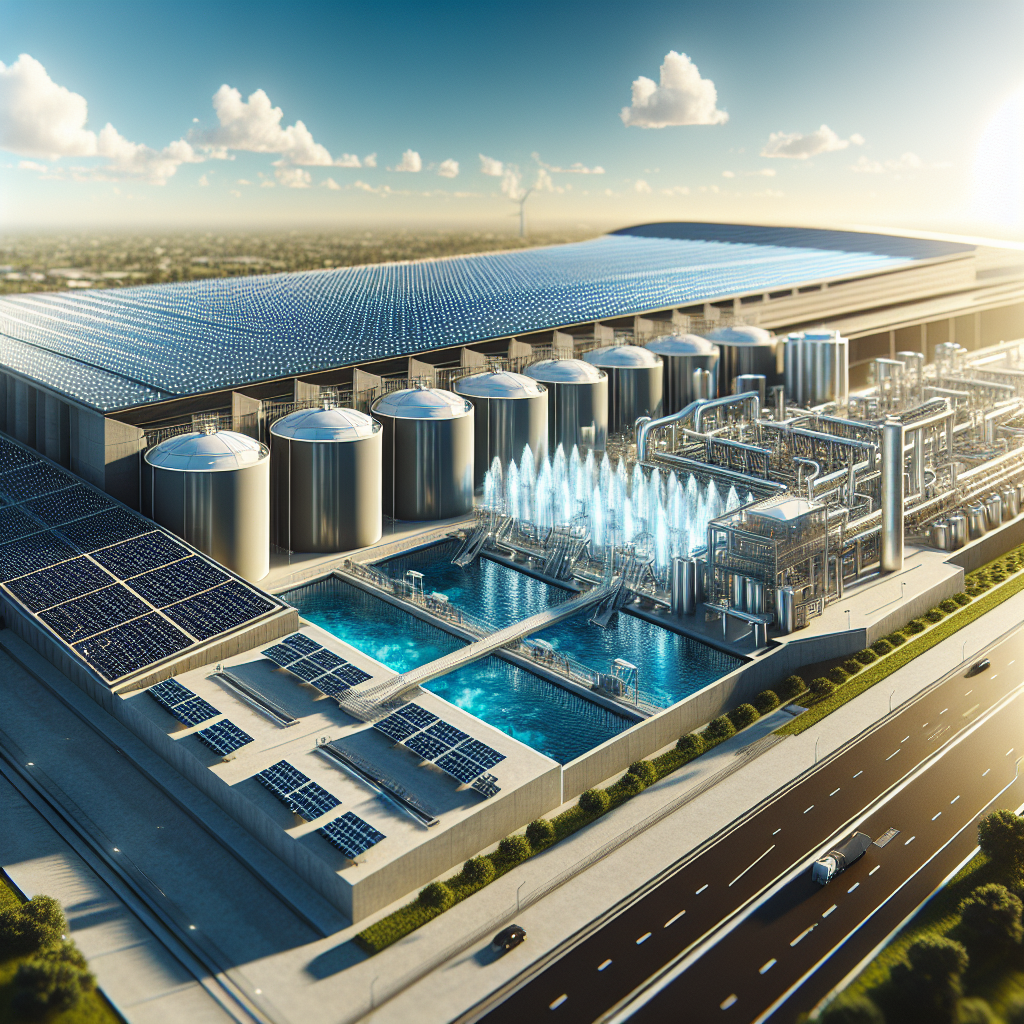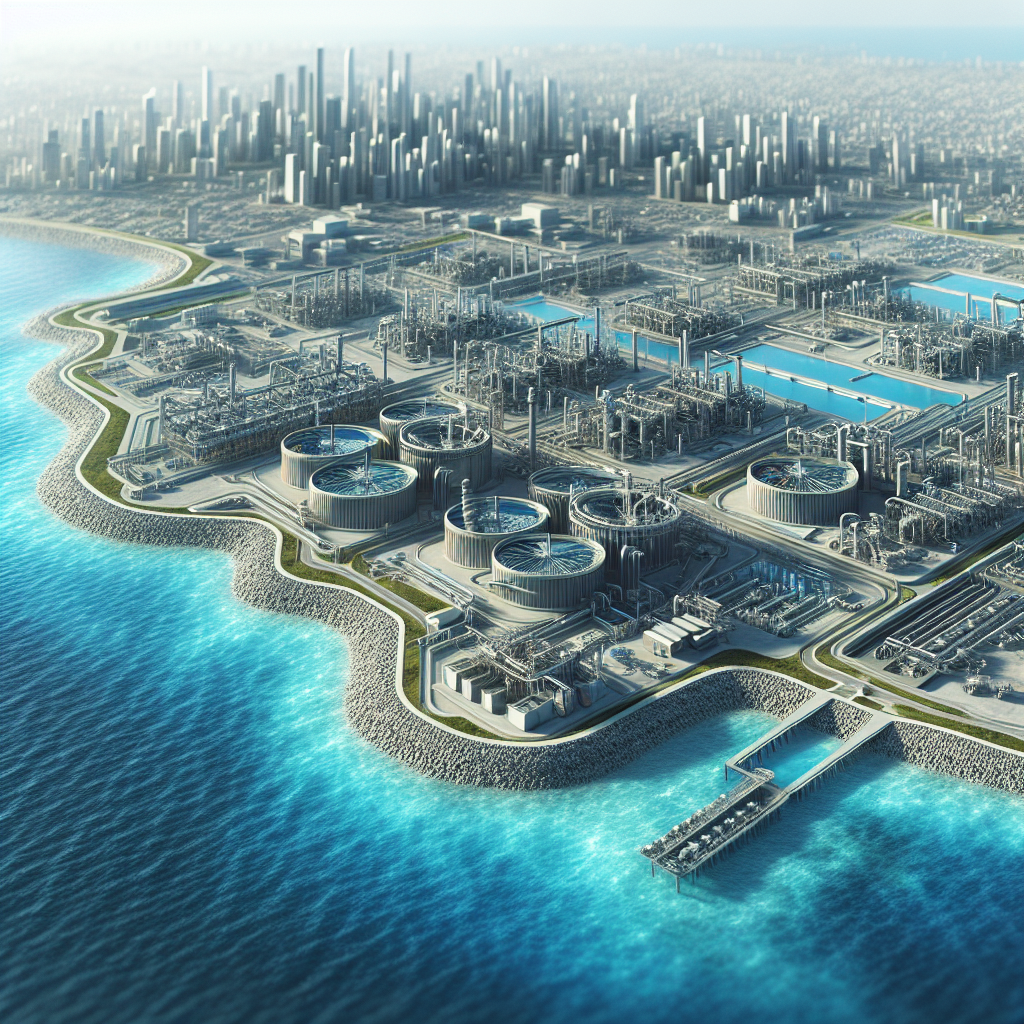Inside America\’s Largest Water Treatment Facilities
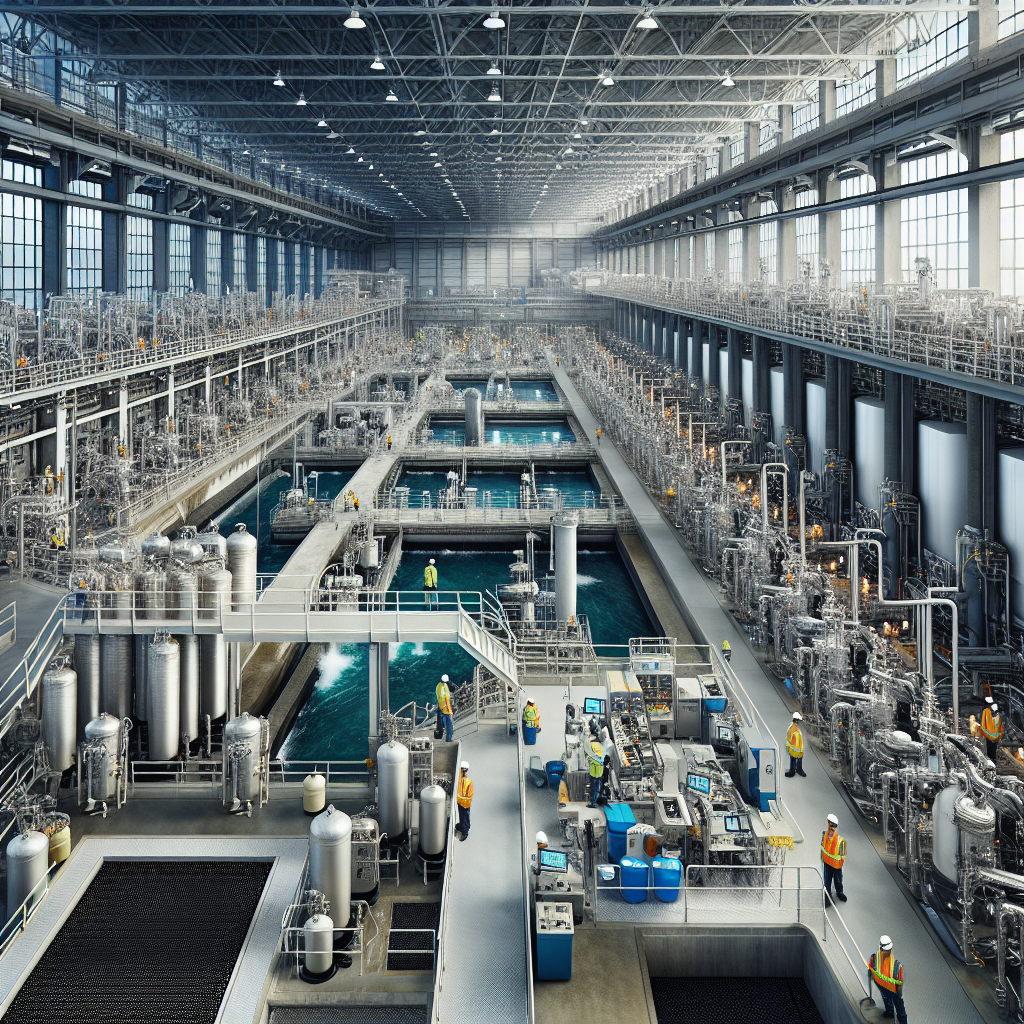
Inside America’s Largest Water Treatment Facilities
Introduction
Welcome to the fascinating world of water treatment! If you’ve ever taken a sip of refreshing water or flushed your toilet without a second thought, you can thank the unsung heroes at the Miami-Dade Water and Sewer Department. Nestled in the vibrant heart of Miami-Dade County, this department is not just about keeping your taps flowing; it’s about ensuring that every drop is safe, clean, and ready for action.
With a sprawling population relying on reliable water services Miami-Dade, the Miami-Dade Water and Sewer Department plays a pivotal role in maintaining the county’s infrastructure. From wastewater management to emergency water services, their mission is as vast as it is vital. Think of them as the guardians of our most precious resource water!
In this blog post, we’ll dive deep into what makes these facilities tick. We’ll explore everything from cutting-edge technology used in treatment plants to innovative practices in water conservation Miami-Dade. And don’t worry we’ll keep it engaging! After all, who said learning about water infrastructure couldn’t be fun?
So grab your goggles (or just your coffee) and get ready to plunge into the depths of Miami-Dade’s water treatment facilities. You might just come away with a newfound appreciation for that glass of water on your table!
Overview of Miami-Dade Water and Sewer Department
The Miami-Dade Water and Sewer Department (MDWASD) is a powerhouse in the realm of public utilities, serving as the backbone of water services in Miami-Dade County. Established in the early 20th century, this department has evolved from humble beginnings into one of America’s largest water treatment facilities, ensuring that residents and businesses alike enjoy safe and reliable drinking water.
Fun fact: MDWASD manages over 400 million gallons of water daily! That’s enough to fill more than 600 Olympic-sized swimming pools!
History and Establishment
Founded in response to the growing population and the need for effective water management, MDWASD has a rich history that reflects the development of Miami-Dade County itself. From its inception, it has focused on improving both water supply and wastewater management, adapting to the county’s expansion and evolving environmental challenges.
Service Area and Demographics
The department serves a diverse population exceeding 2.7 million residents across Miami-Dade County. This vast area encompasses urban centers, suburban neighborhoods, and rural communities, all dependent on reliable access to essential services like sewer services Miami-Dade and water services Miami-Dade.
Importance in the Community
MDWASD plays a critical role in maintaining public health through its commitment to high standards of drinking water safety Miami-Dade. By ensuring that water quality meets or exceeds state and federal regulations, the department not only protects community health but also supports local businesses with dependable utility services. Whether it’s residential or commercial water service Miami-Dade, everyone benefits from their extensive efforts.
The department also engages in proactive initiatives around sustainability, such as promoting water conservation Miami-Dade practices among residents. This includes educational outreach programs aimed at reducing consumption while maintaining high-quality service delivery.
Key Features of Miami-Dade Water Treatment Facilities
When it comes to the Miami-Dade Water and Sewer Department, we’re talking about more than just pipes and pumps. These facilities are marvels of modern engineering, designed to ensure that Miami-Dade’s water supply is not only abundant but also safe and sustainable. Let’s dive into some of the key features that make these facilities stand out.
Technology and Equipment Used
The backbone of any water treatment facility is its technology. Miami-Dade facilities utilize cutting-edge equipment that employs advanced filtration and purification processes. From membrane bioreactors to ozone treatment, these technologies work tirelessly to enhance Miami-Dade water quality. This means cleaner, safer drinking water for everyone!
Capacity and Scale of Operations
With a capacity to serve millions, the scale of operations at Miami-Dade’s treatment plants is nothing short of impressive. These facilities are designed to handle both residential and commercial water service demands, ensuring that every drop counts. The sheer volume processed daily showcases the efficiency and reliability of Miami-Dade County utilities.
Innovative Practices in Water Treatment
Innovation is key in the world of water treatment, and Miami-Dade is leading the charge with sustainable practices. For instance, they have implemented reclaimed water services that not only reduce waste but also promote conservation efforts across the county. This approach not only supports local ecosystems but also helps manage resources effectively.
The Miami-Dade Water and Sewer Department actively promotes sustainable water practices through community outreach programs aimed at educating residents about conservation techniques.
Emergency Water Services Miami-Dade
In a region prone to natural disasters like hurricanes, having robust emergency water services is crucial. Miami-Dade’s facilities are equipped with backup systems and contingency plans that ensure continuous operation during emergencies. This commitment to resilience underscores their role as a vital public utility in times of crisis.
Sewer Maintenance Miami-Dade
A well-maintained sewer system is essential for public health and environmental safety. The department employs proactive sewer maintenance strategies that include regular inspections and pipeline repair services. This not only prevents costly backups but also protects local waterways from contamination.
“The integration of innovative technologies in our facilities ensures we provide safe drinking water while protecting our environment.” – MDWASD Official
In conclusion, the key features of Miami-Dade’s water treatment facilities highlight their commitment to quality, sustainability, and innovation. By leveraging advanced technology and proactive management practices, they ensure that both residents’ needs are met while safeguarding our precious natural resources.
Water Supply Management in Miami-Dade County
When it comes to managing the lifeblood of Miami-Dade County water the Miami-Dade Water and Sewer Department (MDWASD) has its work cut out. With a bustling population and a diverse range of water needs, it’s like trying to juggle flaming torches while riding a unicycle. But fear not! Here’s how they keep things flowing smoothly.
Sourcing Water Supply
The first step in this intricate dance is sourcing the water supply. Miami-Dade County primarily relies on:
- Underground Aquifers: These natural reservoirs are tapped into for fresh drinking water, providing about 85% of the county’s supply.
- Reclaimed Water: A sustainable option, this treated wastewater is used for irrigation and industrial purposes, helping to conserve precious drinking water.
- Rainwater Harvesting: Though not yet widespread, initiatives are underway to capture rainwater, especially in new developments.
Treatment Processes Involved
Once the water is sourced, it undergoes rigorous treatment processes that could make a science lab jealous:
- Filtration: Large debris is removed using screens and filters think of it as giving your water a spa day!
- Chemical Treatment: Chlorine and other chemicals are added to eliminate harmful pathogens. Safety first!
- Testing: Regular testing ensures compliance with federal and state regulations regarding drinking water safety. You can rest easy knowing your glass of H2O has been through the wringer.
Distribution Network Overview
The final act involves distributing this purified liquid gold throughout Miami-Dade County. The distribution network is extensive and intricate:
- Pipelines: Over 4,000 miles of pipelines crisscross the county like veins in a living organism.
- Pumping Stations: These ensure that water reaches every corner of the county no thirsty residents allowed!
- Water Meters: Installed at residential and commercial properties, these clever devices help track consumption and facilitate accurate billing through the online bill payment portal.
Did you know? The MDWASD manages over one billion gallons of drinking water daily that’s enough to fill more than 1,500 Olympic-sized swimming pools!
The Miami-Dade Water Supply management system exemplifies how public utilities can meet growing demands while ensuring quality and sustainability. By investing in innovative practices like reclaimed water services Miami-Dade and focusing on community engagement through educational outreach programs, MDWASD is paving the way for a resilient future.
If you’re curious about how these processes impact your daily life or want to learn more about your local services for instance, sewer maintenance Miami-Dade or emergency water services Miami-Dade don’t hesitate to reach out or explore their resources online!
Wastewater Management Practices in Miami-Dade County
When it comes to managing wastewater, Miami-Dade County is not just treading water; it’s making waves! The Miami-Dade Water and Sewer Department (MDWASD) implements a comprehensive approach to wastewater management that ensures both efficiency and environmental safety. Let’s dive into the nitty-gritty of their practices.
Sewage Treatment Processes
The sewage treatment process in Miami-Dade County is a multi-step affair designed to keep our waters clean and safe. Here’s how it works:
- Preliminary Treatment: This stage involves screening out large debris think of it as the bouncer at a nightclub, keeping unwanted guests out of the party!
- Primary Treatment: Here, solids settle at the bottom while oils float to the top, much like how your pizza toppings separate when you let it sit too long.
- Secondary Treatment: This biological process uses bacteria to break down organic matter. It’s like having tiny helpers cleaning up after a big feast!
- Tertiary Treatment: The final polish! This step removes remaining impurities and nutrients before the treated water is released back into the environment or repurposed for non-potable uses.
Environmental Impact Considerations
The MDWASD takes its role as an environmental steward seriously. Their practices are designed not just to treat wastewater but also to minimize environmental footprints. For example:
- Effluent Reuse: Treated wastewater is often reclaimed for irrigation or industrial processes, reducing reliance on freshwater sources.
- Nutrient Removal: Advanced technologies help remove nitrogen and phosphorus from wastewater, preventing harmful algal blooms in local waterways.
- Energy Recovery: Some facilities harness energy from wastewater treatment processes, turning waste into a resource!
Sustainable Wastewater Practices Implemented
The future of wastewater management in Miami-Dade looks bright thanks to sustainable practices that are already making waves. Here are some key initiatives:
- Green Infrastructure: The county employs green roofs and permeable pavements to manage stormwater runoff better.
- Community Education Programs: MDWASD runs outreach programs that educate residents about sustainable practices and water conservation strategies because every drop counts!
- Sewer Maintenance Innovations: Regular inspections and advanced technologies are used for sewer maintenance in Miami-Dade, ensuring systems run smoothly without unexpected surprises.
A fun fact: Did you know that MDWASD treats over 300 million gallons of wastewater daily? That’s enough water to fill more than 450 Olympic-sized swimming pools!
The commitment of the Miami-Dade Water and Sewer Department to innovative and sustainable practices not only enhances local water quality but also sets an example for other municipalities across the nation. As we continue exploring America’s largest water treatment facilities, it’s clear that proper wastewater management is essential for both public health and environmental sustainability.
Challenges Faced by Miami-Dade Water Services
As the backbone of Miami-Dade County utilities, the Miami-Dade Water and Sewer Department (MDWASD) faces a plethora of challenges that can sometimes feel like trying to keep a beach ball afloat in a hurricane. Let’s dive into some of the most pressing issues.
Aging Infrastructure Issues
First up, we have the aging infrastructure. Much like your favorite pair of shoes that have seen better days, the pipelines and treatment facilities in Miami-Dade are in dire need of some TLC. Many systems were built decades ago and are now struggling to keep up with modern demands. This leads to:
- Increased maintenance costs
- Frequent repairs that disrupt water services Miami-Dade
- Potential risks to drinking water safety Miami-Dade due to leaks or failures
Flood Prevention Measures and Stormwater Management Challenges
Next, let’s talk about stormwater management. With climate change throwing curveballs at traditional weather patterns, Miami-Dade is no stranger to flooding. The department must implement effective flood prevention services MDWASD while ensuring that stormwater is managed efficiently. This includes:
- Upgrading drainage systems
- Implementing green infrastructure solutions such as rain gardens and permeable pavements
- Coordinating with local agencies to enhance flood response strategies
Community Outreach and Public Awareness Initiatives
The final challenge on our list is community outreach. Educating residents about sustainable water practices is crucial for long-term success in conserving resources. However, engaging the public can be like herding cats! MDWASD needs to focus on:
- Creating informative campaigns on water conservation Miami-Dade
- Promoting utility assistance programs MDWASD for those in need
- Enhancing customer service through better communication channels, including online platforms for bill payment and inquiries (MDWASD portal access)
Key Takeaway: Addressing these challenges requires not just investment but also collaboration with the community to foster a culture of sustainability.
The Role of Technology in Enhancing Water Services Miami-Dade
In the bustling metropolis of Miami-Dade, where the sun shines as brightly as the innovations within its water services, technology plays a pivotal role in ensuring that residents enjoy safe and reliable access to water. The Miami-Dade Water and Sewer Department (MDWASD) is at the forefront of this technological revolution, leveraging advancements that not only streamline operations but also enhance overall service delivery.
Water Meter Installation Advancements
Gone are the days of analog water meters that required manual readings and constant guesswork. With the introduction of smart water meter installation in Miami-Dade County, residents can now enjoy real-time monitoring of their water usage. This technology not only provides accurate billing but also empowers customers to manage their consumption more effectively. Imagine being able to check your water usage from your smartphone while lounging on the beach!
Leak Detection Services Innovations
Leak detection services have undergone a makeover too! Utilizing cutting-edge sensors and data analytics, MDWASD can swiftly identify leaks in the extensive pipeline infrastructure. This proactive approach not only minimizes water loss but also saves money for both the department and its customers. Think of it as having a superhero on call, ready to swoop in and fix issues before they escalate into costly problems.
Online Bill Payment Systems and Customer Service Enhancements
With the MDWASD portal access, paying your water bill has never been easier or more convenient! Residents can now manage their accounts online, from bill payments to service requests, all at their fingertips. This digital transformation is essential for improving customer service experiences no more waiting on hold or searching for paper bills under a mountain of junk mail!
The future looks bright for Miami-Dade’s water services as they continue to embrace innovation. Whether it’s through advanced leak detection or convenient online services, MDWASD is committed to ensuring that every drop counts both for conservation efforts and for customer satisfaction.
The Importance of Community Engagement in Water Conservation Efforts
- Utility assistance programs MDWASD li >
- Environmental services initiatives Miami-Dade li >
- Educational outreach programs for residents on sustainable water practices li >
< / ul >
< / section >Conclusion h2 >
< / section >

